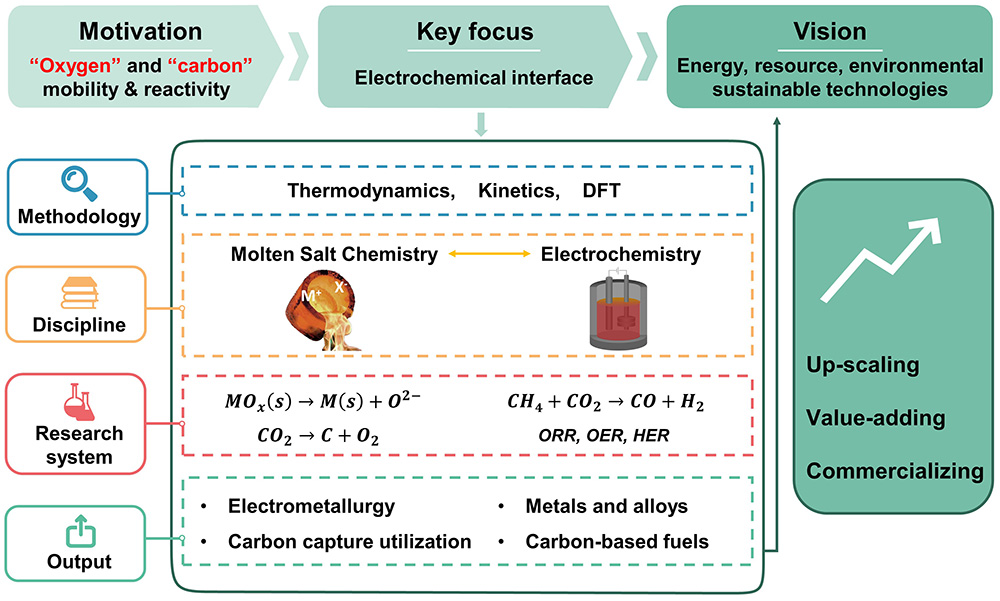
Molten salt electrochemistry is a classic topic with a history backdated to the isolation of alkaline metal by the electrolysis of molten alkaline hydroxide in 1807 (discovered by Humphry Davy), which is now shining in commercial production of metallic materials (e.g. for massive production of metallic Al with the annual yields as high as several hundred million tons). Molten salt is a unique reaction medium, which could offer unusual capability for chemical reactions, heat storage/transfer and energy storage/conversion. Therefore, molten salt electrochemistry becomes a research hotspot for controllable preparation of functional nanomaterials, carbon capture/utilization, molten salt nuclear reactor, and deep space exploration.
The general goal of our group is to develop novel technologies contributing to energy, environmental and resource sustainability by (1) developing affordable, high-efficiency and controllable preparation of materials and (2) deep understanding physicochemical properties of materials in molecular levels for diverse applications including energy storage/conversion, Fischer-Tropsch synthesis, indoor-air purification, water treatment, etc.
Research highlights:
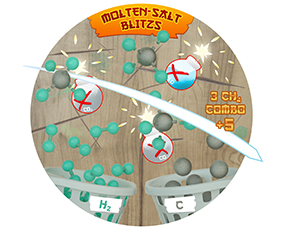
Splitting in melts: The electrochemical splitting of methane in molten salts at 500 °C has been demonstrated as an energy-saving, coke-free, CO2-free and water-free preparation of H2. (Angew. Chem. Int. Ed. DOI: 10.1002/anie.202017243) WileyChem报道:熔盐电化学裂解甲烷:无水低碳制氢新思路

Liquid as an acrobat: Liquid Zn cathode serves as a depolarizer to facilitate the electrochemical reduction of CO2, and also a soft template to direct the generation of core-shell Zn@C spheres for enhanced energy storage. (Adv. Energy Mater. 2020, 2002241.) MaterialsViews报道:心有灵锌一点通——液态锌阴极助力二氧化碳还原
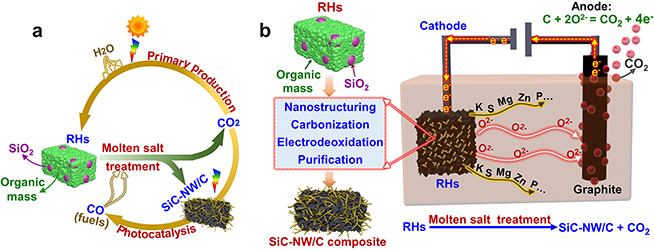
Closed-loop carbon cycle: A one‐step and template‐free synthesis of a SiC nanowires/C (SiC‐NW/C) composite from rice husks (RHs) is realized via a molten‐salt‐assisted electrochemical method. (Adv. Mater. 2020, 32, 2001560.)
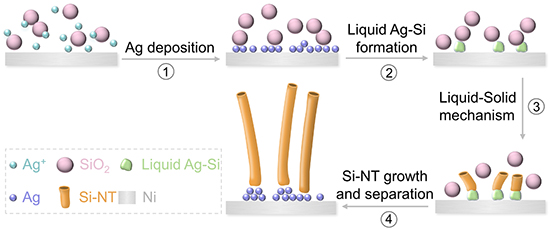
Template‐free electrochemical formation of Si‐NT (nanotube) from SiO2 and in situ coating of an Ag buffer layer over the Si‐NT are realized via the co‐electrolysis of SiO2 and AgCl in molten NaCl–CaCl2 at 850 °C. (Adv. Sci. 2020, 2001492.) MaterialsViews报道:吹尽狂沙始到金——沙子到硅纳米管的“炼金术”
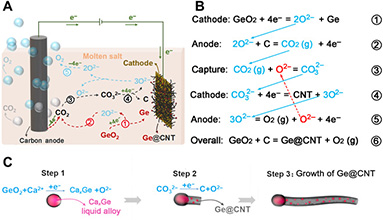
Cathode-anode synergy: Coelectrolysis of soluble GeO2 and in situ–generated CO2 at carbon anode to cathodic Ge@CNTs and anodic O2 in molten NaCl-CaCl2-CaO. (Sci. Adv. 2020, 6, eaay9278.)
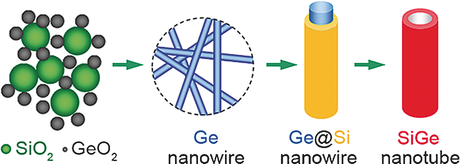
Template-free and one-pot preparation of hollow nanostructures: Crystalline Si-Ge alloy nanotubes and hollow particles are synthesized through electrolysis of solid oxide mixtures in molten chlorides. The continuous solid diffusion governed by the nanoscale Kirkendall effect results in the formation of inner void in the alloy particles. (Angew. Chem. Int. Ed., 2016, 55, 7427-7431.)